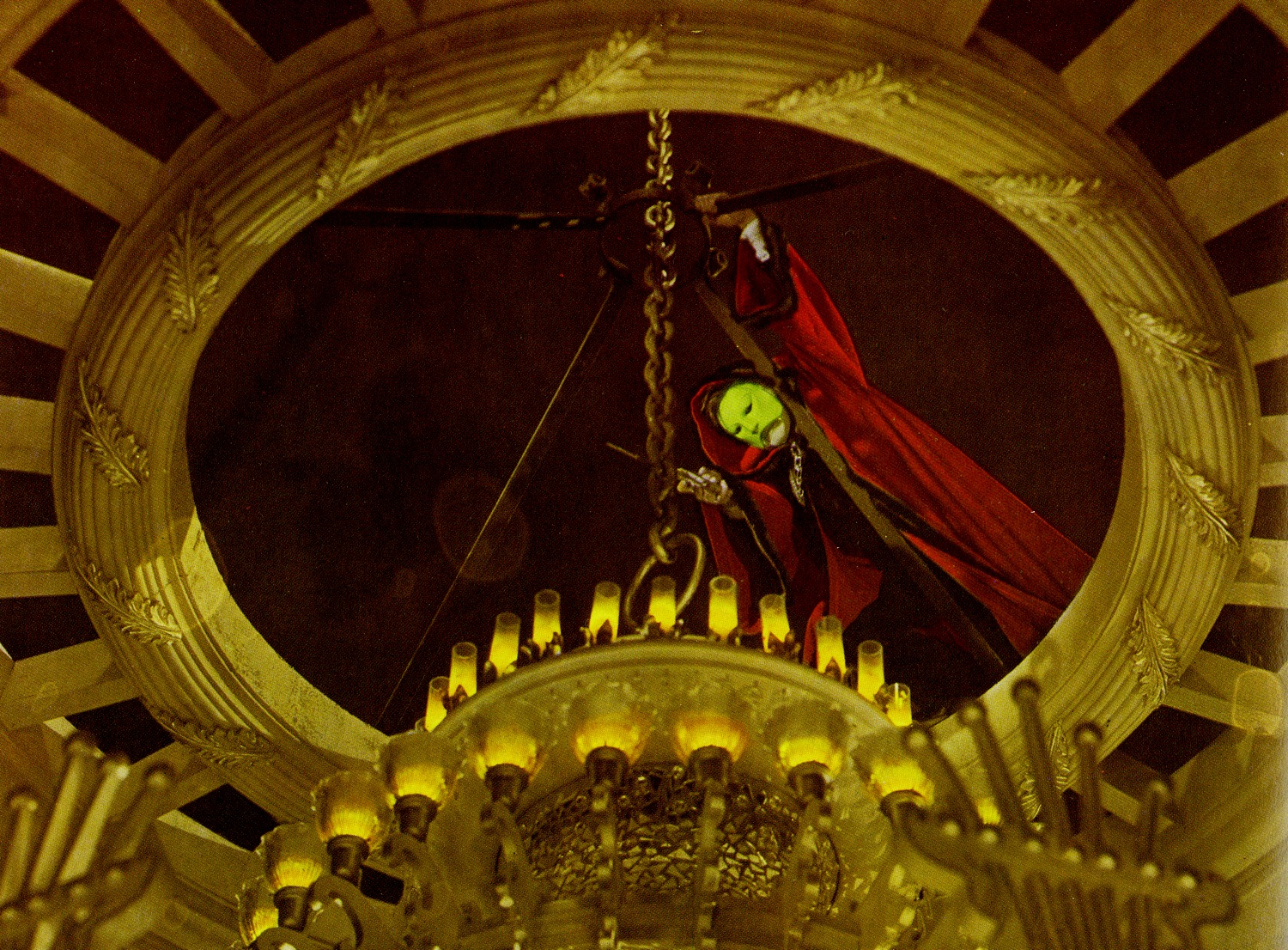

The turntable has never been used since the 1943 feature film.

After this 1943 film was completed, the stage flooring was installed covering the turntable. The turntable mechanism was tuned up and used. The 1943 Universal Studios Technicolor remake of "Phantom of the Opera" stripped the plywood floor covering in order to utilize the turntable for the film's stage production numbers. The projector camera has to be in direct center of the filming camera's lens point of view position, with a depth of field allowance. The raised stage area was utilized for feature film "process photography" because of the depth required for a film projector onto a rear screen, enough room for a camera and crew, with an acting/performance area in front of the screen. The original stage had a theatre pin rail system with hanging pipe arbors for electrical lights, existing on the stage right area. When a camera crane is used on the stage, allowances have to be considered with the turntable's floor position, related to the film set requirements. After the original film was completed, the turntable area of the stage floor was covered with three layers of 3/4" thick plywood 4'-0" x 10'-0" sheets, which allowed future film sets to be built upon the turntable stage area for feature filming. The entire weight of the turntable is thrust upon this center turning spindle. The turntable centers on a center cylindrical shaft, with triangular inverted bracing branches, welded to the center shaft, similar to an inverted umbrella brace. All of the mechanics for the turntable have remained intact, sitting in their original structural position. The basement of stage 28 houses the original turntable mechanical mechanism to turn the 30' diameter turntable. What really makes this stage unique is that in 1925, an elaborate 30'-0" diameter mechanical turntable sits in the center of the front stage area, allowing forty (40) feet from the back edge of the turntable to the rear stage back-wall. The North end of stage 28 encompasses the raised stage area.

The audience area is one third of the stage's foot print. The top of the interior theatre ceiling master shot is completed with a matte painting. The master wide-shot from the top rear box seat area encompasses the stage proscenium, orchestra pit, and the chandelier. The European horseshoe Paris Opera Theatre's three tiered box audience seating area surrounds the floor audience ramped area. The Universal Studios' stage 28 floor-foot print, built for the 1925 B&W Lon Chaney "Phantom of the Opera" feature film, is enormous.


 0 kommentar(er)
0 kommentar(er)
